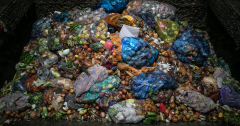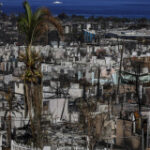SEOUL —
Striding through a field of overgrown grass where thick blue pipes crisscross into concrete silos, Choi Sung-ho scrunched his nose in the steamy July heat, drawing in a familiar odor.
Located just off a highway that leads out of Seoul’s western border, Nanji Sewage Treatment Center, where Choi works, primarily deals with the human waste produced in Seoul’s toilets. But the smell now wafting up is that of decomposing food.
That smell is a constant source of tension between the center and nearby residents, who have called to complain so many times that the head of the facility no longer lists his personal phone number on his business card.
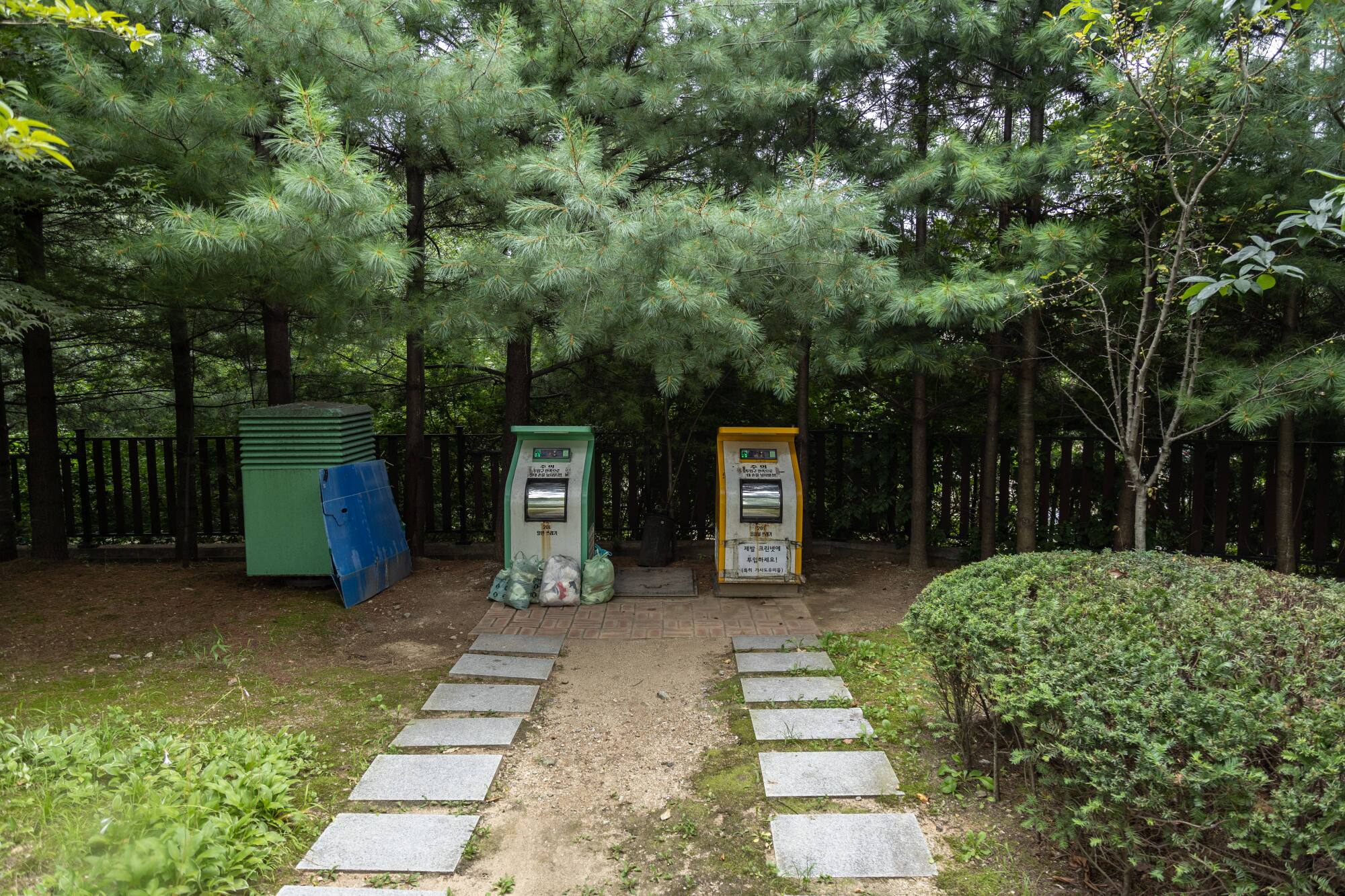
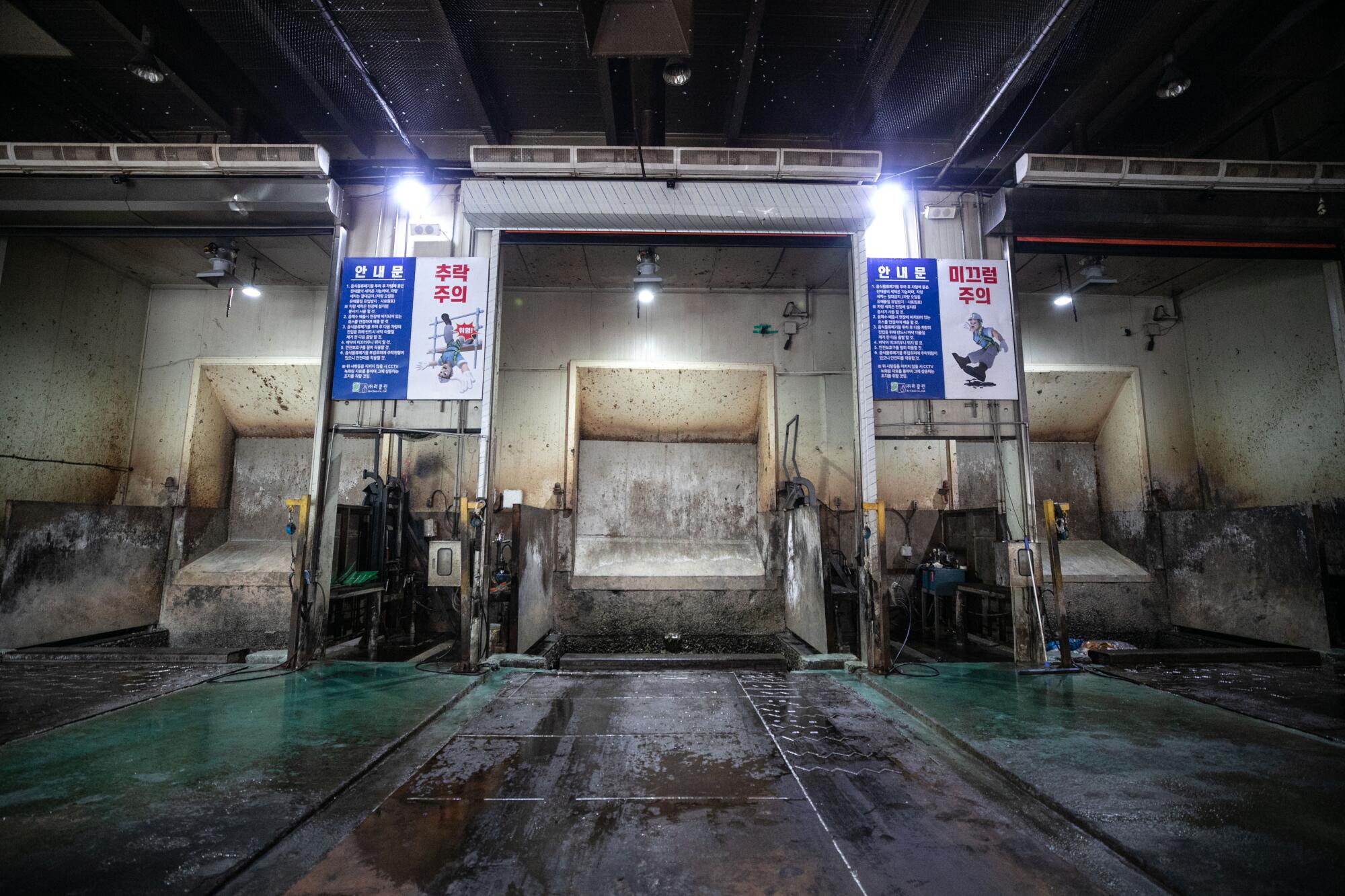
Top: A food collecting machine called “CleanNet”, right, next to a regular waste collecting machine at an apartment complex in Seoul. Bottom: Inside the waste treatment facility.
(Jean Chung / For the Times)
Choi is sympathetic to these concerns. Fielding such complaints is as much a part of this job as keeping the sludge flowing smoothly. But in a city of 10 million that produces 2,500 tons of food waste daily, the plant’s role in recycling it is as essential as it is thankless.
Since South Korea banned land-filling food waste in 2005, followed by another ban on dumping its liquid byproduct (known as leachate) into the ocean in 2013, the country has operated a comprehensive composting program that recycles almost all of its discarded food into fertilizer, animal feed or, in the case of Nanji Sewage Treatment Center, a type of fuel called biogas.
Every day, the plant processes about 130 or so tons of leachate from waste-collection companies in the surrounding area. The liquid is poured into the concrete tanks, where, over a period of 15 to 30 days, it will be broken down by microorganisms in a process called anaerobic digestion. The biogas that this process yields is then captured and sold to a local utility, which will use it to heat the area’s homes.
“It’s just like digestion in people,” Choi explained, tapping his stomach. “We maintain the tanks at 36 or 37 degrees Celsius, similar to the temperature in human bodies.”

The food waste that ends up at Nanji Sewage Treatment Center starts out in a translucent yellow bag, which South Koreans have been required to use for throwing out their uneaten food since 2013.
By purchasing them, which are priced at around 70 cents per liter and sold at any convenience or grocery store, residents effectively pay a tax on the food that they are throwing away. The revenue from the bags is collected by each district and used to offset a portion of the costs of transporting and processing its food waste.
“In Seoul as a whole, bag fees pay for about 40% of the total cost of processing, which costs the city about $153 million annually,” said Jang Ji-ae, head of the municipal food waste management team.
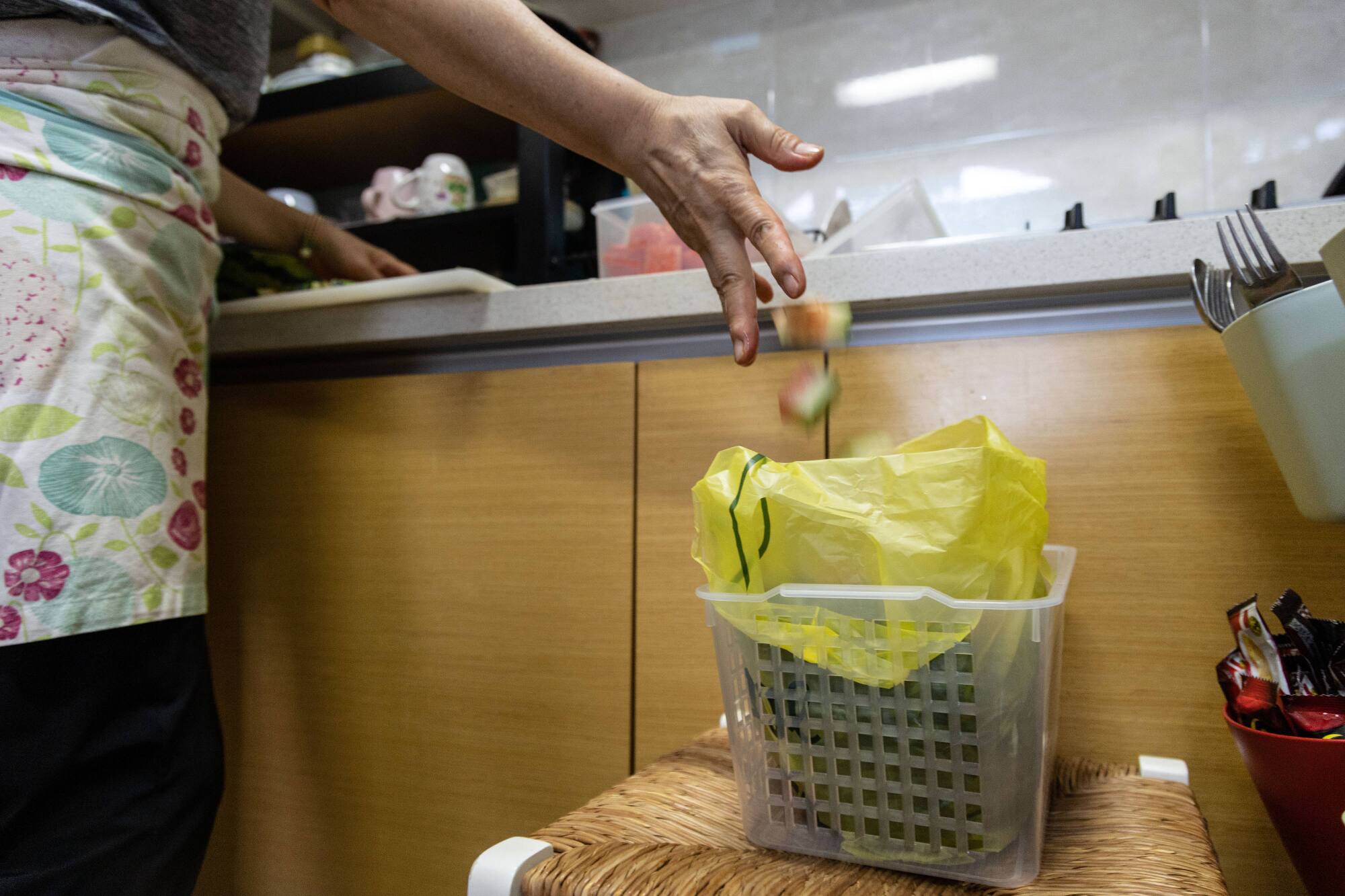
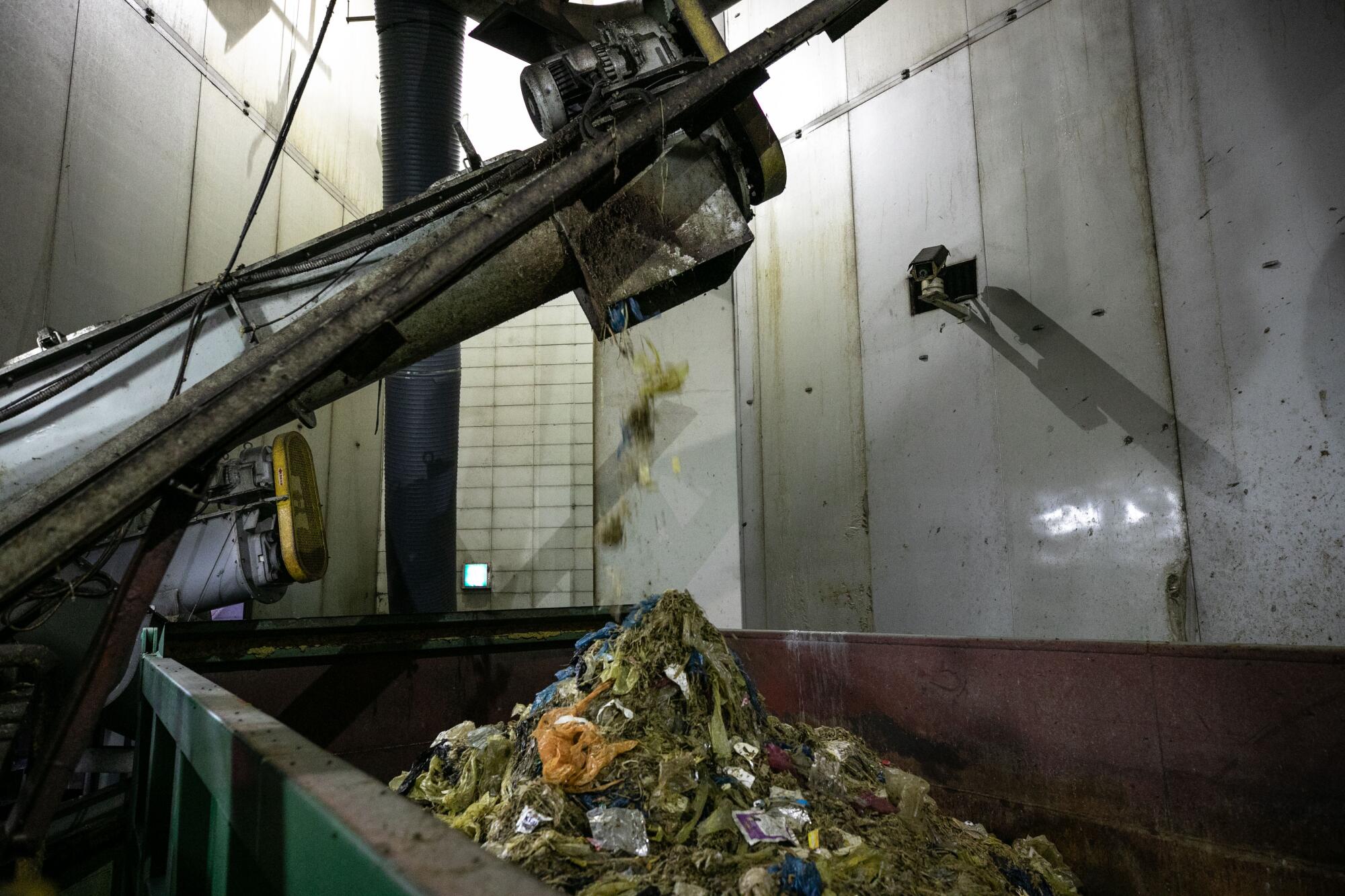
South Koreans have been required to use food waste bags, seen at top in translucent yellow, for throwing out their uneaten food since 2013.
(Jean Chung / For the Times)
The routine is second nature to every Seoul resident: squeeze out any moisture and place the full bag in a personal green bin by the curb after sunset. In some apartment complexes, residents can skip the bags and put their food waste in electronic waste bins that will automatically weigh their contribution and charge them accordingly.
These methods encourage people to come to grips with the waste they create. “You are able to perceive just how much you are throwing away,” Jang said. “That makes people uncomfortable.”
Later, at processing facilities around the city, the bags will be stripped off and any foreign objects removed from the sludge. The remaining contents will be squeezed, dehydrated and processed into fertilizer or animal feed, while the liquid runoff is sent to wastewater plants like Nanji.
Under this scheme, the country currently recycles close to 100% of its food waste, a remarkable jump from just 2.6% in 1996.

This effectiveness of the South Korean system has made it a model case study for government officials in other countries, many of whom reach out to their counterparts in Seoul for advice.
Last year, Jang’s team held a Zoom consultation session with officials in Tokyo. In Japan, food is thrown out along with general waste and later incinerated, but the Tokyo officials were exploring the possibility of a recycling-oriented alternative.
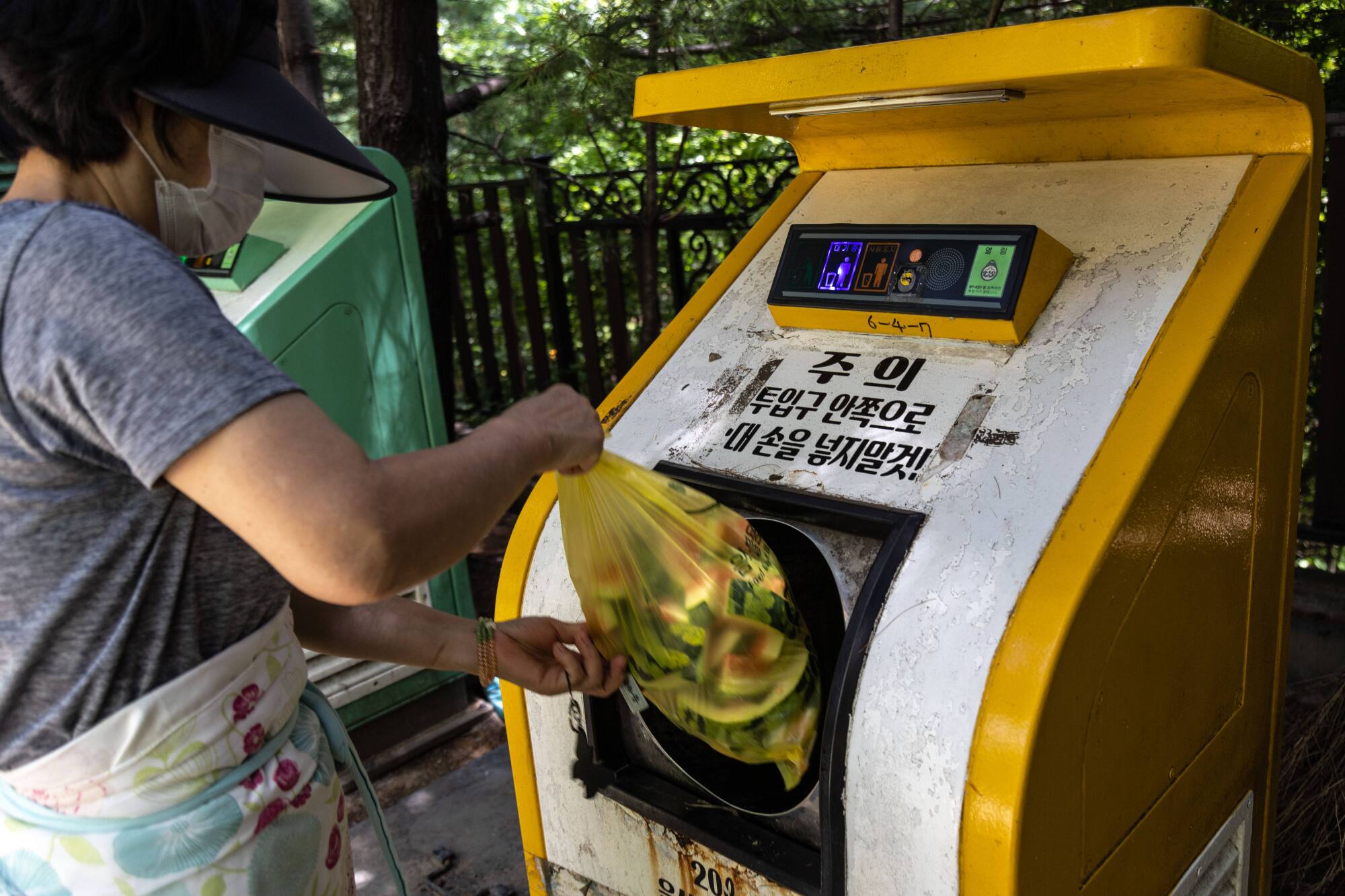
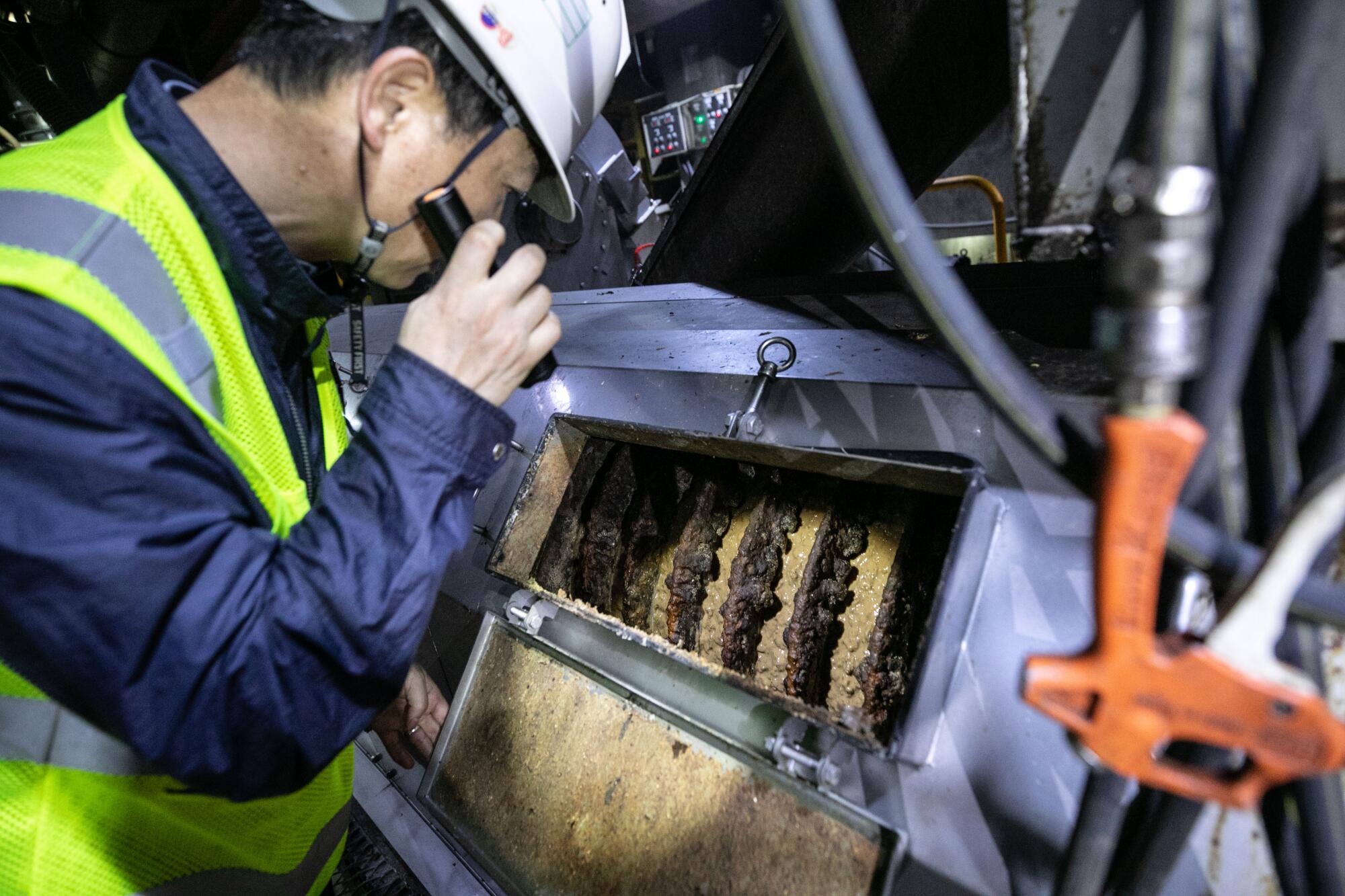
South Korea currently recycles close to 100% of its food waste, making it a model case study for government officials in other countries.
(Jean Chung / For The Times)
“They were most curious about how to separate food from general waste,” Jang said. “They really wanted to know whether people would actually be willing to go along with something like that.’”
In South Korea, the separation of food from general waste — the bedrock of any recycling system — began in the late 1990s.
An intense period of urbanization had led to overcrowding in the capital, while rising standards of living were leading to levels of waste unseen in more frugal times. Residential areas pushed up against massive landfills that had reached their limits, leading to frustration toward the odors and pests.
According to Jang, these direct sensory encounters with the unpleasant consequences of food waste gave the issue an explosive political charge in the country. That paved the way for the banning of land-filling food waste in 2005, but most important, it primed people for accepting the added inconvenience of disposing of their food waste separately.
Still, the first few years followed a learning curve.

If the Golden State is going to lead the world toward a better, safer future, our political and business leaders — and the rest of us — will have to work harder to rewrite the California narrative. Here’s how we can push the state forward.
“There was a lot of trial and error, lots of experimentation,” said Kim Mi-hwa, chairwoman of the Korea Zero Waste Movement Network, a national coalition of 180 environmental groups that worked with the government on the recycling scheme. “I would say it was only in 2013 or so that we could call it a success.”
One early problem was the rule-breakers. Unaccustomed to having to separate and collect food waste indoors, where careless storage would lead to an odor problem, many resorted to sneaking their food waste out to public waste bins. Local governments offered rewards to tipsters who reported offenders, who in turn would be fined.
“At subway stations back then, you’d see signs telling people not to throw their food waste away there,” Kim said. “That was a common one — people would throw out their food waste in the bathroom on the way to work.”
But punitive measures had their limits, and it was ultimately grassroots activism by Kim’s group that hel

